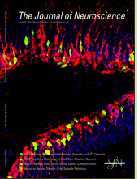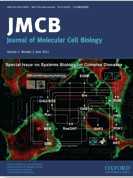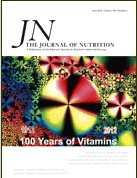J Neurosci:程乐平等脊髓背角神经递质受体基因表达研究获进展
2012-07-03 上海生科院 上海生科院
6月20号,《神经科学杂志》(The Journal of Neuroscience) 发表了中科院上海生科院神经所神经发育及其调控机理研究组的论文《Tlx1/3 and Ptf1a control the expression of distinct sets of transmitter and peptide receptor genes in the developing dorsal s
6月20号,《神经科学杂志》(The Journal of Neuroscience) 发表了中科院上海生科院神经所神经发育及其调控机理研究组的论文《Tlx1/3 and Ptf1a control the expression of distinct sets of transmitter and peptide receptor genes in the developing dorsal spinal cord》。该项工作是由研究生国祯、赵丛玲和黄梦归等在程乐平研究员的指导下共同完成的。同期的 The Journal of Neuroscience 发表了题为“转录因子驱动一些独特的神经环路相关蛋白的表达”(Transcription Factors Drive Distinct Neural Circuit Proteins)的评论,对该项工作进行了介绍。
弄清神经递质、神经肽及其受体在不同类型神经元中的表达模式对于理解神经系统中神经环路的形成具有重要意义。脊髓背角在躯体感觉信息从外周向大脑传递的过程中起重要作用。依照所使用的神经递质的不同,脊髓背角神经元可分为兴奋性的谷氨酸能神经元与抑制性的γ-氨基丁酸能神经元。一些神经肽也特异地表达在谷氨酸能神经元或γ-氨基丁酸能神经元中。我们及他人的工作曾报道一些转录因子决定脊髓背角谷氨酸能神经元与γ-氨基丁酸能神经元中神经递质与神经肽的表达。然而,是否有一些神经递质与神经肽的受体特异地表达在谷氨酸能神经元或γ-氨基丁酸能神经元中,他们的表达受哪些基因调控,目前的报道还很少。
利用原位杂交及免疫组化染色技术,作者发现多种神经递质与神经肽受体基因特异地表达在谷氨酸能神经元中。通过分析基因敲除小鼠的表型,发现这些受体的表达依赖于决定谷氨酸能神经元命运的转录因子Tlx1/3。转录因子Lbx1与Ptf1a同时也对这些受体在谷氨酸能神经元中的表达起调控作用。进一步实验表明,多种神经递质与神经肽受体基因特异地表达在γ-氨基丁酸能神经元中,它们的表达依赖于决定γ-氨基丁酸能神经元命运的转录因子Ptf1a;转录因子Pax2与Tlx1/3也对这些受体基因在γ-氨基丁酸能神经元中的表达起调控作用。
该研究结果揭示了决定神经元命运的转录因子同时也决定了神经元中特异表达的神经递质与神经肽受体的表达。这为认识神经元的发育调控及神经环路的形成机制提供了新的视角。
该工作得到了科技部及中科院项目的资助。

doi:10.1523/JNEUROSCI.6301-11.2012
PMC:
PMID:
Tlx1/3 and Ptf1a Control the Expression of Distinct Sets of Transmitter and Peptide Receptor Genes in the Developing Dorsal Spinal Cord
Zhen Guo1, Congling Zhao2, Menggui Huang2, Tianwen Huang2, Mingran Fan2, Zhiqin Xie1, Ying Chen1, Xiaolin Zhao2, Guannan Xia1, Junlan Geng2, and Leping Cheng2
Establishing the pattern of expression of transmitters and peptides as well as their receptors in different neuronal types is crucial for understanding the circuitry in various regions of the brain. Previous studies have demonstrated that the transmitter and peptide phenotypes in mouse dorsal spinal cord neurons are determined by the transcription factors Tlx1/3 and Ptf1a. Here we show that these transcription factors also determine the expression of two distinct sets of transmitter and peptide receptor genes in this region. We have screened the expression of 78 receptor genes in the spinal dorsal horn by in situ hybridization. We found that receptor genes Gabra1, Gabra5, Gabrb2, Gria3, Grin3a, Grin3b, Galr1, and Npy1r were preferentially expressed in Tlx3-expressing glutamatergic neurons and their derivatives, and deletion of Tlx1 and Tlx3 resulted in the loss of expression of these receptor genes. Furthermore, we obtained genetic evidence that Tlx3 uses distinct pathways to control the expression of receptor genes. We also found that receptor genes Grm3, Grm4, Grm5, Grik1, Grik2, Grik3, and Sstr2 were mainly expressed in Pax2-expressing GABAergic neurons in the spinal dorsal horn, and their expression in this region was abolished or markedly reduced in Ptf1a and Pax2 deletion mutant mice. Together, our studies indicate that Tlx1/3 and Ptf1a, the key transcription factors for fate determination of glutamatergic and GABAergic neurons in the dorsal spinal cord, are also responsible for controlling the expression of two distinct sets of transmitter and peptide receptor genes.
本网站所有内容来源注明为“梅斯医学”或“MedSci原创”的文字、图片和音视频资料,版权均属于梅斯医学所有。非经授权,任何媒体、网站或个人不得转载,授权转载时须注明来源为“梅斯医学”。其它来源的文章系转载文章,或“梅斯号”自媒体发布的文章,仅系出于传递更多信息之目的,本站仅负责审核内容合规,其内容不代表本站立场,本站不负责内容的准确性和版权。如果存在侵权、或不希望被转载的媒体或个人可与我们联系,我们将立即进行删除处理。
在此留言














#程乐平#
67
#神经递质受体#
79
#研究获进展#
80
#基因表达#
61
#ROS#
72
#神经递质#
69